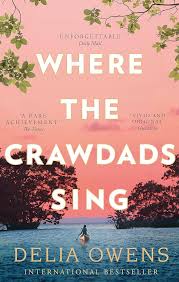11. Croker Sacks Full
byCroker sacks full of grits were all that Kya had left in 1956, a bitter symbol of her struggle to survive alone after her abusive father, Pa, stopped returning to their decaying shack in the marshes. At just ten years old, Kya was now fully responsible for her own survival, facing the reality of complete isolation in the untamed wilderness. As days turned into weeks, and weeks into months, she braced herself for the reality that her father’s departure might mean the permanent absence of both parents, leaving her with nothing but her own resilience and resourcefulness. The once sparse provisions in the shack, now dwindling away, had been reduced to only a small amount of grits, a few matches, a sliver of soap, and a fleeting hope that perhaps her father would return. But that hope quickly faded as the cold, harsh winter approached, making the survival of the bare essentials even more critical.
Kya, now completely on her own, was forced to learn the art of survival in the marshlands that had once been a place of comfort and solace for her. The crickets and birds were the only sounds she heard as she grappled with loneliness, trying to hold on to the fragments of her childhood that still lingered in her memories. One particularly sobering realization came when she found herself without enough kerosene to light the lamps that had always kept the darkness at bay. With the extinguishing of that light came a more profound darkness—a metaphor for the loss of warmth, not just physically, but emotionally and psychologically. The absence of light was symbolic of the emptiness she now felt, a void left behind by her father’s disappearance and the disappearance of any hope for the safety and love that once defined her childhood. Despite her fear of abandonment, Kya continued to hold herself together with an indomitable spirit, relying on the natural world around her to sustain her.
Her days in the marsh, filled with struggles and the necessity of managing her small stockpile of supplies, forced Kya to adapt in ways she hadn’t anticipated. The grits, once an essential part of her diet, became the basis of her survival, but without the means to cook them properly, they turned into a symbol of how even the most basic resources could be out of reach. Her connection to the swamp deepened as she began to understand how every plant, every animal, every movement in the environment was part of a larger cycle of survival. Without a father to teach her how to hunt or gather, Kya relied on her instincts, observing the patterns of the marsh and learning from them. The grits, still in their croker sack, seemed to weigh her down, but they also served as a constant reminder of her dependence on herself, not just for food but for emotional survival as well.
Despite the harshness of her reality, Kya did not give in to despair. Instead, she drew strength from the world around her, immersing herself deeper into the rhythms of the marsh. She learned to adapt, finding solace in the simple, quiet moments with nature. As the months passed and winter’s chill grew ever closer, Kya realized that survival wasn’t just about food and shelter—it was about self-reliance and the strength to keep going despite the odds. The croker sacks full of grits, which once symbolized the scarcity of her resources, became a testament to her ability to hold on, a small but important part of the foundation she would build to survive both the physical challenges of life and the emotional toll of abandonment. The chapter captures Kya’s transformation, as she begins to learn that survival means more than just staying alive—it means finding purpose, strength, and hope even in the most isolating circumstances.


